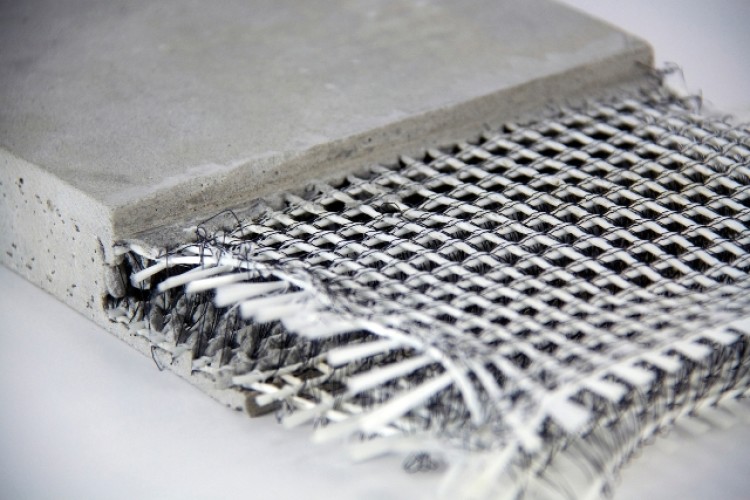Advanced Composites for Sturdy and Lightweight Building And Construction
Opening the Ecological Advantages of Recycled Composites in Building and Layout
In the realm of building and construction and style, the application of recycled compounds holds significant promise for boosting sustainability practices and minimizing ecological impact. The change towards a more lasting future in these sectors hinges on unlocking the full capacity of recycled compounds.

Environmental Influence Reduction
The decrease of ecological impact via using recycled composites in construction and layout plays a crucial function in sustainable methods. By including recycled compounds into structure materials, the building and construction industry can dramatically lower its carbon impact and add to a more environment-friendly future. These lasting materials, made from repurposed plastics, wood fibers, or other recycled elements, offer a feasible alternative to conventional building materials without endangering on top quality or durability.
Recycled compounds aid draw away waste from garbage dumps and lower the demand for drawing out basic materials, thus conserving natural deposits. Additionally, the manufacturing procedure of these composites frequently eats much less power and sends out less greenhouse gases contrasted to generating virgin products (composites). This shift towards making use of recycled compounds not only minimizes environmental harm yet additionally advertises a circular economic situation by motivating the reuse of materials that would otherwise be thrown out
Waste Minimization
With a concentrate on minimizing waste in building and construction and style, the combination of recycled composites provides a sustainable solution to lower ecological influence. Waste reduction is a critical facet of lasting methods, and making use of recycled composites offers a possibility to achieve this goal successfully. By making use of materials that have actually currently offered their preliminary objective, such as recycled plastics or reclaimed wood fibers, the building and construction and layout sectors can significantly decrease the quantity of waste created and sent to garbage dumps.
Recycled composites have the potential to draw away substantial amounts of waste from typical disposal methods, contributing to an extra circular economic situation where sources are utilized successfully. Additionally, the production procedure of recycled composites often takes in much less power and produces fewer exhausts contrasted to virgin materials, even more decreasing the ecological footprint of building and design projects.
Carrying out waste reduction strategies via the consolidation of recycled compounds not only helps in preserving all-natural sources however likewise promotes a more lasting approach to building and designing for a greener future.
Power Preservation
Incorporating recycled compounds not just minimizes waste in building and layout however also plays a critical role in improving power preservation practices within the sector. The usage of recycled composites in building and construction can significantly contribute to power conservation via different ways. Firstly, the production of virgin materials generally needs considerable power inputs, whereas utilizing recycled compounds consumes much less power, thus minimizing total energy intake. Additionally, including recycled composites can contribute to much better insulation buildings in buildings, lowering the need for extreme home heating or cooling, and as a result lowering energy usage for climate control. The light-weight nature of many recycled composites can lead to lighter structures, requiring less energy for transportation and installation. By promoting making use of recycled composites in building and layout, the industry can make considerable strides in the direction of attaining energy effectiveness and lowering its carbon footprint, inevitably adding to a more lasting constructed setting.
Carbon Impact Decrease
Enhancing sustainability practices through the utilization of recycled compounds in building and layout dramatically decreases the carbon footprint of the market. By incorporating recycled materials into the manufacturing of compounds, the requirement for virgin sources decreases, bring about lower power intake and greenhouse gas emissions related to typical production processes. This reduction in carbon impact is crucial in combating climate modification and advertising an extra eco-friendly method to building and layout.
In addition, using recycled composites likewise aids in drawing away waste from garbage dumps, thereby mitigating the ecological effect of disposal and promoting a circular economy. The carbon impact reduction attained via the fostering of recycled composites aligns with the global press towards lasting techniques and the decrease of industrial discharges. It showcases a commitment to liable source monitoring and a change in the direction of greener options in my company the building and construction and style fields. Eventually, by prioritizing the combination of recycled compounds, the industry can make significant strides in reducing its carbon impact and adding to a much more lasting future.
Lasting Future
The integration of recycled composites in building and construction and design not just addresses immediate environmental issues but likewise lays a strong structure for a sustainable future in the sector. By integrating recycled compounds into structure materials and products, the construction and style sectors can considerably decrease their reliance on virgin resources, leading to an extra circular economic situation. This change in the direction of sustainability is crucial for mitigating the ecological impact of standard construction techniques, which often cause high degrees of waste generation and resource depletion.

Final Thought
In final thought, recycled compounds provide substantial environmental benefits in building and style by minimizing ecological influence, lessening waste, preserving power, decreasing carbon footprint, and advertising a sustainable future. Accepting making use of recycled compounds can contribute to an extra environmentally-friendly approach to structure and layout, inevitably bring about a much more lasting and greener future for all.
The decrease of ecological influence through the usage of recycled compounds in construction and design plays a crucial function in sustainable practices.With an emphasis on lessening waste in building and layout, the integration of recycled composites supplies a sustainable service to reduce environmental impact. By promoting the use of recycled compounds in building and go to these guys style, the sector can make substantial strides in the direction of attaining power efficiency and reducing its carbon footprint, inevitably contributing to an extra sustainable constructed setting.
